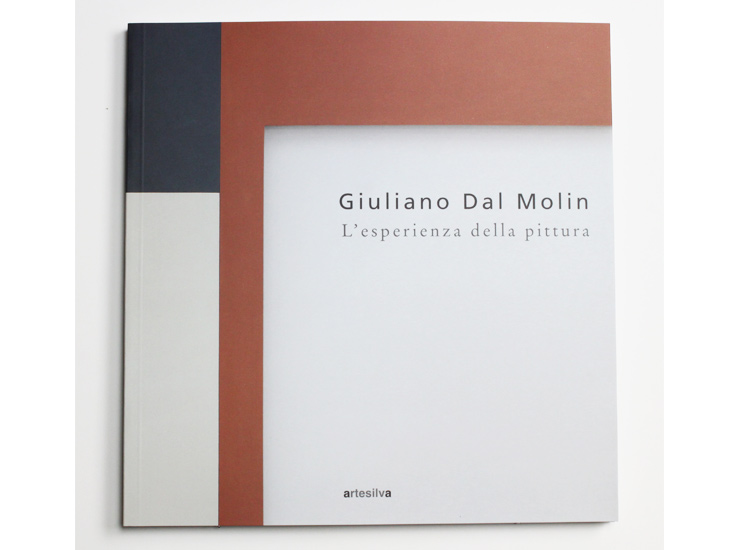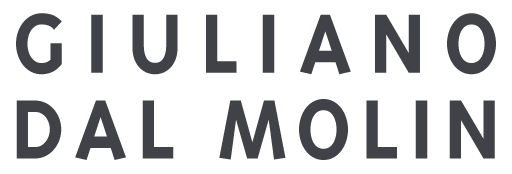
The experience of painting by Angela Madesani
The initial thought of paintings by Giuliano Dal Molin is a sign, expanding into space and going in all directions. Over the years, from the Eighties to the present, this artist – who spends much of his time in his studio to do research on the subject, the colour, the shape, the meaning of his works – worked in a dimension where the boundary between painting and sculpture are not well defined. Not a wasteland, but a territory full of ideas in whom is not easy or important to provide definitions. His research is a continuous desire to experiment, finding new surprises for the results of his work.
Here in the exhibition promoted by ArteSilva visitors will see a preponderance of painting. The colours of works (mainly cold) are taken from tradition (Piero Della Francesca, Giorgio Morandi) and obtained through a strenuous search, almost obsessive. Grey, just to give an example, is not a result of white and black mixed, but there is rather the strain of a balance between the primary colours, which are connected and mixed up to obtain the desired result. As an evidence of these several steps are the edges of the works, with the footsteps of colours used: poietic and poetic memory.
For the first time in a work, displayed in this exhibition, Dal Molin uses a bright green, without fear of being too realistic, too imitative of the nature.
Crucial in this work is the relationship with space. The curation of the exhibition should be read in the precise direction: the artist, in his work, leaves nothing to chance. “Space is a challenge that generates the form. It suggests the infinite possibilities of the from that becomes a sign, or volume, or colour. I feel the need to get out of pattern of a closed form and work with the space” [1]. In this sense the continuous dialogue between the different languages in his work is very important. Luca Massimo Barbero, in a text of 1993, wrote of a chase, in each work, of an endless path, a continuous search of the Space conceived as poetic Form [2].
The history of art is a matter of continuous reflection, but also the history of architecture, in particular for ancien period, for example the Romanesque. I like to find a certain similarity with a work of our Twentieth century, the monument conceived by Giuseppe Terragni in 1935 for the young Roberto Sarfatti, who died during the First World War. A monument suspended in the void of the nature of the Col d’Ecchele, not too far from the place where Dal Molin live. We are faced here with the passing of the different languages, architecture and sculpture, to achieve something else, indefinite and indefinable. And the overcoming of the painting in its specificity is the object of Dal Molin’s work.
“I am obsessed by an ideas, I have the need to get and realize them, to fill a continuous gap” [3].
Its not an obsession of the repetition of the same subject, but is related to the method of work. The intention is get the essence, the main core of things. The attempt is to eliminate any tinsel. As sentenced by Adolf Loos, ‘Ornament is a crime’. There is a kind of clean lines in all of this work, which corresponds to a diuturnal aspiration, a mental cleansing and – why not? – Ethics. Making art is, for him, a way to give meaning to life, to his own of course, but not only. The aspiration is the purity of light that makes possible to reach deeply the complex simplicity of the phenomena. It is not exaggeration, therefore, if we glimpse a spiritual tension in his work.
“The idea of perfection or illusory perfection is a consequence of the need to bring order, order in life. I need to fill a void, to create a space for the spirit” [4]. Even the research of the form has nothing to do with geometry, although these forms are geometrical. The work is born and grows, develops without a previous calculation. ‘Concrete ideas’ defined in their own process of definition, as written by Accame [5].
The project, in certain cases, is the starting point, but the development is autonomous, the emotional matrix plays role, although the will of rigor and synthesis is a guide to proceed. Drawing is a daily practice, but is not binding. In the construction phase the work continues to change, can become something else. “The work does not end with the design. It continues in a progression that leads me to develop its shape during the execution, according to the will inside of the work itself” [6].
In the works presented here, realized in the last year, you can see a kind of liberation from all forms of limitation, there is the desire to express fully his pictorial thinking in all its fullness, without fear. The works in the exhibition are assemblage: the individual peaces do not come on their own. The moment in which the artist created them was already thinking about the position in a complex work, creating harmony. In the exhibition are displayed also a number of cards in which the colour we see is only a trace of what has been deposited on the paper, after having removed everything in excess.
This is a path of the essence of things, not an easy attitude looking for a ‘zero grade’ of the phenomena, but certainly a point of arrival, to start over again, day after day, a new journey with painting.
(In memory of Giovanni Accame)
[1] G.Dal Molin curated by C.Seganfreddo, 2 Piani Giuliano Dal Molin, Galleria 503 Mulino, Vicenza, 2004.
[2] L.M.Barbero, Giuliano Dal Molin, Barbierato Arte Contemporanea, Asiago, 1993.
[3] G.Dal Molin curated by C. Seganfreddo, op.cit., 2004.
[4] idem
[5] G.M.Accame La misura del fare in G.M.Accame, A.Zanchetta, La misura del fare, Galleria Lagorio, Brescia, 2005; p.8.
[6] G.Dal Molin curated by C. Seganfreddo, op.cit., 2004.
